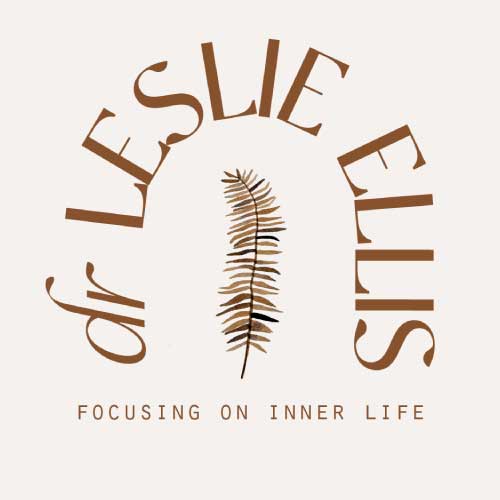Do your dreams feel too insubstantial to take seriously? When you wake with wisps of dream memory, flashes of image or tiny snippets do you tend to dismiss them as not enough of a dream to engage with in any meaningful way? Read on to find out what you can do to make the most of these micro-dreams.
In my work with dreams, so often I hear people who are truly interested in dreams lament that they don’t recall enough dreams. Even if they have a sense of having dreamt, most of the memory of it fades quickly, leaving them with a flash of an image or tiny snippet of the dream. They don’t feel like there is enough to explore, and instead are waiting for an epic dream to engage with. The truth is, big dreams are rare. Most of us are able to capture just the small pieces of dream that are still available to our consciousness upon waking. There is a sense that so much more happened in the dream that slipped away, and the fragments that are left are not worth exploring.
Nothing could be further from the truth. I see dream snippets as just as valuable as any other kind of dream. They are a piece of the whole and can open the doorway, through our psyche’s associative networks, to the larger message contained in the fragment. I tend to see such shards of dreams as densely-packed like poetry, each detail steeped in meaning. I see dream fragments as worthy of attention for many reasons:
- Dream snippets I have worked with have opened up new vistas and avenues of transformation for so many dreamers.
- It is in the nature of dreams to evade capture by our conscious minds, so anything that makes a deep enough impression to be recorded in our memory is important and worthy of further inquiry.
- When we treat singular dream images as precious, our dreammaker responds by sending us more dreams.
- We tend to be biased against our own dream images, and can be too apt to dismiss them as unimportant. In the case of snippets, we mistakenly discard them on the grounds that they are not substantial enough.
- Sometimes, a dream snippet is a fragment of a larger dream, and when you engage with it, the rest of the dream, or some of it, comes back to you.
How to Engage with Dream Fragments and Snippets
The oft-stated problem with micro-dreams is that there just doesn’t seem to be much to work with. I can tell you that, in my dream practice, I have spent several full sessions with dreamers on just one impactful dream fragment. This is because I work with dreams in an embodied experiential way (called focusing) that uses image as a leaping-off place to listening inward. Dream images tend to carry a unique embodied felt sense that is like the tip of an iceberg. As we attend to it, more opens, leading to further steps, changes and insights.
This may seem like a stretch until you have experienced it for yourself. The body is an incredible repository of deep and subtle wisdom that is waiting to unfold if attended to in a patient, respectful and open-ended way. If we think we already know what an image means, we cut off the incredible wisdom that can come from it. Dream images, especially the wispy and fragmentary ones, are visitations from the edge – from the boundary between what we know and don’t yet know. This is where new realizations and creative ways forward come from, and not from the ideas that we already have.
The Power of Not-Knowing
Not-knowing is a powerful place to inhabit. If you want to expand your consciousness or knowledge, you have to start from a place of humility, a sense of wonder and openness, a willingness to enter unfamiliar territory. That we can only expand our experience by entering the unknown seems self-evident, but we are typically drawn to the ideas and beliefs we already possess.
Next time you awake with a wisp of a dream, take a minute to write it down, and then make some time, either first thing upon waking or later, to engage with it. Do not assume it is meaningless or that you already know what it means. Often we mistake identifying the dream’s memory source as its meaning. For example, I had a dream snippet of my friend Debbie walking a sandy beach wearing a rock climbing harness. That was the whole of the dream. I had recently been telling her about my daughter’s mountaineering adventures, so it would be easy to conclude the dream was a result of that conversation. But I know better. The dream may have chosen elements of my recent experience as part of its palette, but that doesn’t tell me why it did so, or why it created this specific composite.
A dream does not come to tell you what you already know. So I would need to spend time with the image to get a sense of what it’s telling me. Here are some of the steps I would take: start with immersing into the setting of the dream. We’re on a white sand beach so one might assume vacation paradise. In fact my friend was recently on a work trip at a tropical location, and personally, I’m not a fan of beach holidays. As a general rule, do not presume you know anything about a dream (especially someone else’s).
Something interesting about this dream is the anomaly of climbing gear while on a beach. Potentially this is pointing to not having the right equipment for the situation. Maybe there is a metaphor here about climbing in general, possibly related to work. I might consider the attributes of my friend – what do these have to teach me? In entering her experience, what comes: she works hard and plays hard, maybe does too many things at once. Can I ever relate to that!
As I both write this and sit with my dream image, I begin to feel its intention opening up to me. I could continue, but you are probably getting the idea. Here are the steps I tend to follow to open up and engage with even the tiniest of dream images.
Embodied Experiential Steps for Dream Snippets
- Choose a dream image or snippet you are curious about.
- Begin with the setting of the dream image. Re-enter the dream scene in your imagination and look around. There may be more detail than you realize.
- Get a sense of the temperature, weather, mood, location, sounds, smells… the more senses you engage, the more deeply you will experience the dreamscape.
- Turn toward the central image of the dream and place yourself at a comfortable distance from it. Let it know you are there, be curious about what it wants you to know. If you ask, it may tell you or show you.
- Consider what is most helpful or has the most energy for you in this dream scene. Locate this source of help in your body and let it take up space.
- Let the dream image carry forward if it will, ask what happens next. You may be genuinely surprised.
- If you are still unsure of what the dream image wants you to know, try becoming it. If it feels okay for you to do this, immerse yourself in its subjective experience and see what it’s like from the inside. This new perspective can bring unexpected insight.
After doing all of that, you likely have a much greater appreciation for the image from your dream, and possibly a sense that you could keep going much further with this exploration. You can also then journal about your experience and/or create a drawing or other artistic representation of the dream as a way of engaging with it further and keeping it with you in a form that you can appreciate at a glance.
I trust all of the above has given you not only a sense that there is so much you can do to open up even the tiniest of dream fragments. And I’m hoping to have inspired you to try this out and see what comes of it. Feel free to share your experience in the comments.
For those interested in trying a short guided experiential exploration, I have recorded a session in my substack, and am making a series of dream recordings available to subscribers here: https://dreamsdemystified.substack.com/p/dream-wisps-and-snippets-nuggets

